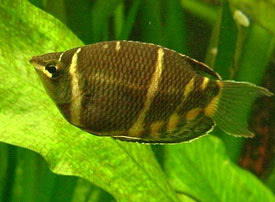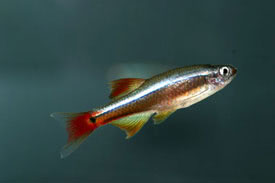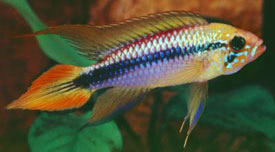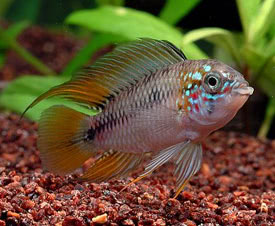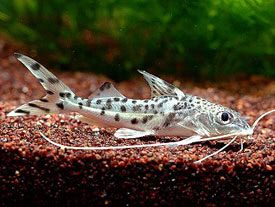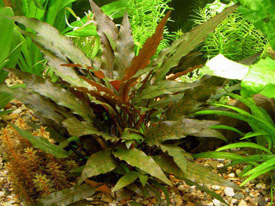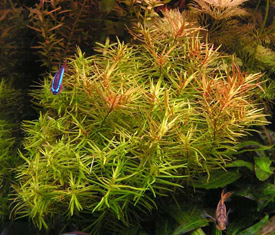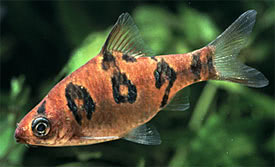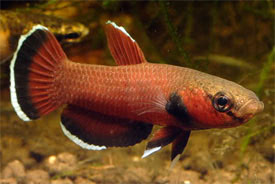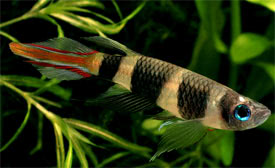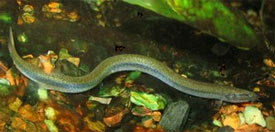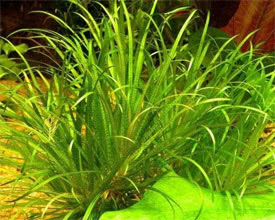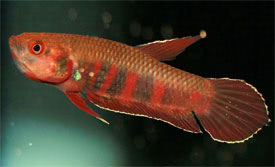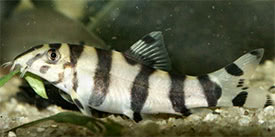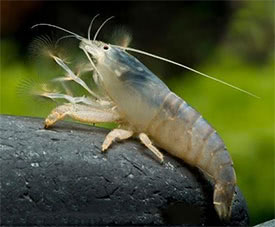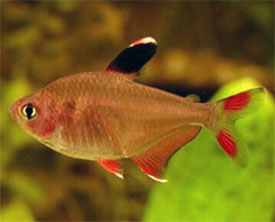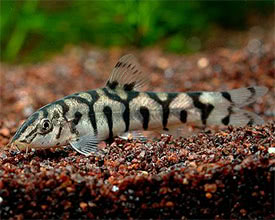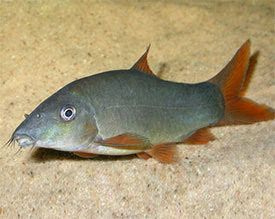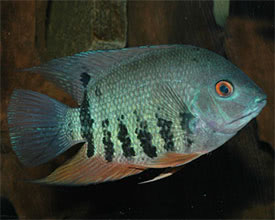
 Magyarul / Hungarian
Magyarul / Hungarian


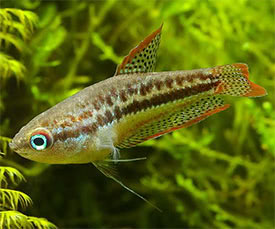
- Scientific name: Trichopsis pumila
- Synonyms: Ctenops pumilus (Arnold, 1936)
- Common name: Sparkling Gourami
- Group: Labyrinth fishes
- Habitat: Asia; Thailand, Cambodia, Vietnam and Peninsular Malaysia.
- Size: 3.5-4 cm
- Biotope: Found in slow-flowing or standing waters mostly among the submerged vegetation. Also inhabits rice paddies, swamps and flooded forest areas.
- Social behavior: A peaceful, often shy fish, but not recommended for a community aquarium, it is best to keep them in a species tank. However they can be kept with peaceful, small cyprinids (Microdevario, Boraras, or Trigonostigma) or with small loaches (Pangio or Petruichthys). Males can be aggressive with each other.
- Diet: Omnivorous; feeding mostly on insects and other small invertebrates in nature. It will accept small live, frozen and dried foods in aquarium.
- Breeding: Quite hard
- Tank: Minimum 40 litres
- Population: 1 pair for 40 litres.
- Decoration: Does well in a densely planted aquarium with floating plants that dim the lighting. Build many hiding places from roots and branches, or use clay plant pots or pipes to create shelter. Dried leaf litter on the substrate is also useful and resemble to their natural habitat. Their tank must be covered, as they are good jumpers.
- Temperature: 22-28 °C
- pH : 5-7.5
- Hardness: 1-12 NK°
- Lifespan: 3-5 years
Description: Sparkling Gourami has pale brown body, with a brown transverse stripe extends from the snout to the caudal fin. Over the brown stripe there is a whitish area, and over this stripe there is a broken brown band. Under certain light conditions the flanks have a greenish iridescence. Their iris is bright blue, while the outer parts of the eye is orange. Sparkling Gouramis have colorful light blue fins with red spots and their edges are also red and blue. They can be kept in pairs, or in small groups of one male and 2-3 females. In a larger aquarium with many hiding places, more males can be kept together. Interestingly they can make "croaking" sounds during courtship or when they are excited. Studies determined that this sound is important not only in breeding displays but also when the males establish dominance. They create this "croaking" sounds by the rapid beating of their pectoral fins, and it can vary according to the individual fish. With their labyrinth organ they can breathe atmospheric air, and can survive in oxygen-poor muddy waters. They are difficult to sex visually, but mature males have more intense colors and develop longer ventral, anal, dorsal, and caudal fins than females.
Sparkling Gourami is a bubble nest builder. They should be bred in a separate aquarium. The aquarium must have a tight fit cover (some breeders use clingfilm), and do not fill it with water to the top, as the fry require access to a layer of humid air for the proper development of their labyrinth organ. Before spawning the male builds a small bubble nest under the surface or among the plants, but he also has a pronounced tendency to nest in caves under pieces of driftwood and under low, broad-leaved plants. They spawn under the bubble nest: the male embraces the female’s body with his own body while the eggs and sperm are released, and both fish collect and transfer them to his nest. The number of the eggs can vary between 100 and 170. After the spawning the male will protect and look after of the eggs. The eggs hatch in 24-48 hours and will stay in the nest for another 2-3 days. The male will collect and return any that fall out. When the fry become free-swimming the male will lose interest, and in most cases the parents will not eat the fry. As the fry are very tiny they require infusoria until they are large enough to accept newly hatched brine shrimp.







